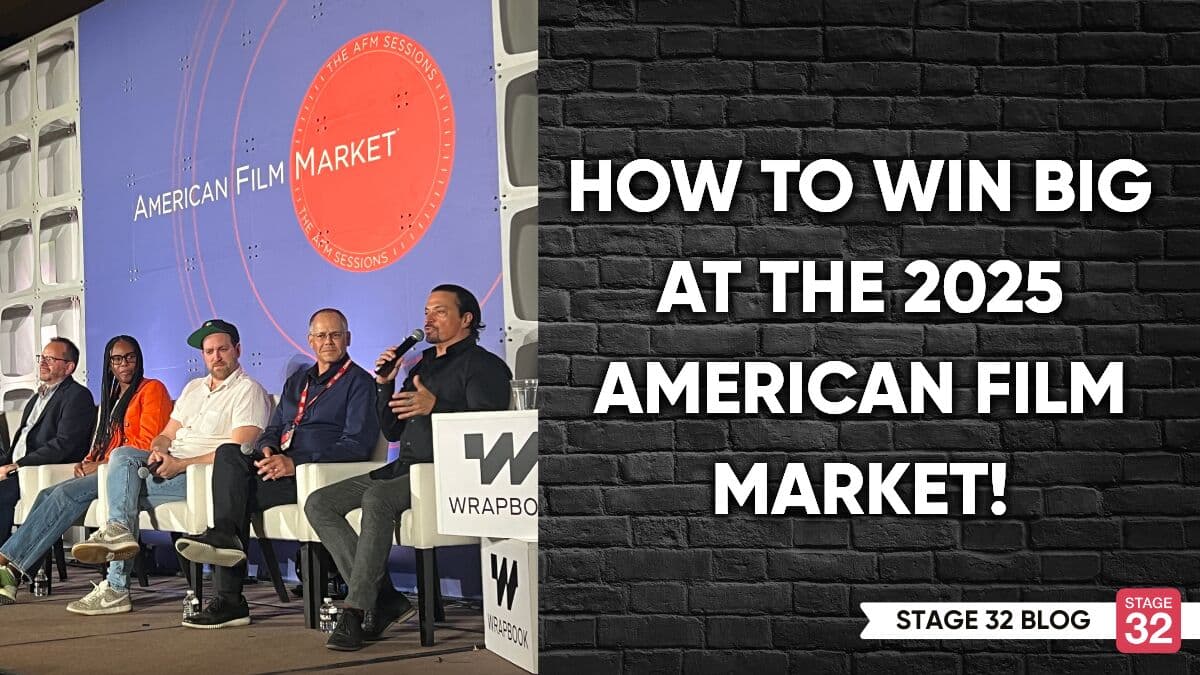4 Reasons To Have Audio Description On Your Film

4 Reasons To Have Audio Description On Your Film

There’s a saying that we’ve all heard a thousand times over, “A picture is worth a thousand words”. This resonates with visual artists when ensuring that the visuals they convey will provoke the right tone and message to the many words and feelings that they will portray and intend for their story.
Now this concept isn’t new to most of you and it’s just what good storytellers and filmmakers should be doing right?! I mean, what artist doesn’t put their heart and soul into infusing their vision into their film, spending years molding the experience their audience will have and to tell the story they want to tell, that their audience will enjoy?
Well, before we get too caught up in that statement, which I’m sure many of you agree with. I’m going to ask all of you to join me and everyone else at this exact same moment kindly taking the time to read this, to take a few moments and think about a scene from one of your favourite movies. What was it that you liked about it? I bet you can imagine the brilliant character design, the little things about their expressions, what they wore, and how they carried themselves that make them a character you love. Or how about the amazing set design and cinematography, all those things that evoked a certain vibe within you and gave you a feeling of being grounded in the story, the surroundings, and the emotion.
Now I want you to imagine that you’re blind…

Audio description is an additional audio soundtrack that is overlayed onto your film or show that describes key elements of action, design, and tone in between dialogue and other key sound elements. A picture is worth a thousand words, but to the visually impaired who equally want to enjoy your film, it is the words you have chosen for your pictures that make all the difference here are 4 reasons to have audio description on your film:
1) Blind People Watch Films Too
Remember earlier when we were talking about how much hard work filmmakers put into telling the best and right version of their story, putting in the time and passion, to then put it out into the world so that everyone who would potentially enjoy their film could access it? Well, there’s a huge population that wants to watch your film and that want to enjoy and experience the story you want to tell but can’t without an audio description track available. Currently, there are 275 million people globally with low vision or who are completely blind, and over the next 30 years, this is expected to rise to just over 700 million. In the US and UK alone there are approximately 10 million who are visually impaired.

2) Enhance The Creative Experience And Quality
For many that don’t know, when you go shopping your film around to hopefully get a deal to distribute your film, there are usually fees involved for that distributor to charge for the creation of things like subtitling, closed captions, and sometimes, although much less so, audio description. Now the problems with filmmakers either not being aware of things like audio description or not including the creation of it in their filmmaking or post-production process are the following:
- The Director or Filmmaker is allowing a completely separate entity to create the vision of the film that the visually impaired community will experience, which can be the completely wrong tone for your film and in many instances at worst a bad experience of your film.
- Some companies will use a robotic synthesized voice rather than a human, which most low vision users will not listen to, will think your film is terrible and is a waste of whatever fee you were charged for to put this on your film.
- When signing a deal to have the distributor create these materials for your film, they are in fact in most cases for the exclusive use of that distributor and this causes several possible things to happen. Filmmakers don’t realize this and expect that wherever their film is distributed the AD track goes with it, which is not the case for the most part and again the visually impaired are left unable to access your film or unknowingly and unintentionally you are being charged several times through different contracts to have audio description created multiple times and again is being created most of the time with no creative input or control from the Director.

3) Diversity And Inclusion
We now live in a much more diverse and inclusive world but unfortunately, disability such as blindness or deafness still hasn’t quite reached the same awareness and drive as gender and racial inclusivity have. There are however some pretty exciting organizations in the film industry that are taking notice and driving this and that may be worth you also taking notice of and taking part in.
At this year’s Sundance Film Festival, Sundance advocated and held a panel about audio description on films and accessibility and they accept films at their festival to be screened with the AD track available to visually impaired audience members. Paus TV, is a relatively new short film streaming platform that allows the audience to watch the films for free but also allows people to tip and donate to their favorite films and filmmakers. I recently spoke with Paus about including AD on their platform and they have steamed ahead in creating an audio description collection of films on their platform that are already available.
4) Having Options Is Optimal
We all love to consume content and entertainment in multiple ways and in multiple formats, whether that’s because we prefer it in certain ways, we need it in certain ways or for certain situations it’s more convenient. For instance, our story might have started as a book, then an audiobook, then a film which you can view digitally or have the physical DVD of. Creating more options of your film being accessed, like through audio description is not only most importantly needed by a huge part of the population that is starved of this content but can actually be beneficial to sighted audiences too. Several people accidentally have come across audio descriptions on films and then like to use it to watch a film that they can’t always keep their eyes on all the time and even pick up on things in the audio description that they actually never noticed when physically watching the film. Companies like Netflix for example have picked up on this and have launched audio-only play modes for people to enjoy their films and shows while doing things like driving on long journeys and commuting.
So there you have it, 4 reasons to have audio description on your film and hopefully some insights and understanding to those that had never heard of audio description before reading this today. I hadn’t heard of audio description until a few years ago but discovering it really opened me up to a lot of possibilities, a lot of education, and a lot of amazing people. If you want to see some examples of AD on films then please check out the short film audio description collection on Paus TV. I’m creating AD on all of my films and would love to help out anyone who wants to know more about this space or just to generally connect.
Let's hear your thoughts in the comments below!
Got an idea for a post? Or have you collaborated with Stage 32 members to create a project? We'd love to hear about it. Email Emily at blog@stage32.com and let's get your post published!
Please help support your fellow Stage 32ers by sharing this on social. Check out the social media buttons at the top to share on Instagram @stage32 , Twitter @stage32 , Facebook @stage32 , and LinkedIn @stage-32 .
About the Author

Jaye Adams
Screenwriter, Director, Filmmaker, Audio Post-Production
Hey there! I'm an upcoming UK indie horror filmmaker with a lifelong love for the genre and a passion to tell unique original stories in the horror space. There's rarely a time when I'm not learning, fulfilling my never ending curiosity or improving myself or my projects and I'm a big believer i...





